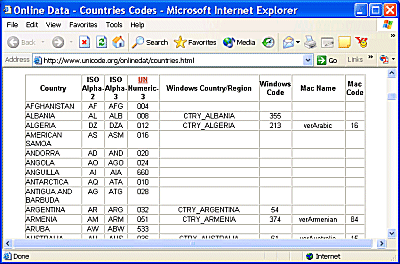
Support for modifying and creating xml documents in planned in a future version. Escape and unescape special characters with url_escape() and url_unescape(). See xml_ns() for more details.Ĭonvert relative urls to absolute with url_absolute(), and transform in the opposite direction with url_relative().

Where appropriate, functions support namespaces with a global url -> prefix lookup table.
IMPLEMENT HTML XML FILE VIEWER FULL
Get the full path to a node with xml_path().Įxtract various components of a node with xml_text(), xml_attrs(), xml_attr(), and xml_name(). Alternatively, use xpath to jump directly to the nodes you’re interested in with xml_find_one() and xml_find_all(). Navigate the tree with xml_children(), xml_siblings() and xml_parent(). Read XML and HTML with read_xml() and read_html(). Xml2 is a wrapper around the comprehensive libxml2 C library that makes it easier to work with XML and HTML in R: : Returns formatted HTML for the input $pictures.I’m pleased to announced that the first version of xml2 is now available on CRAN. : $pictures: Remaining elements to process. : this current sequence that precede those in $pictures. User will see the HTML preview in the Output Editor. Click on the URL Button and Paste the URL.
IMPLEMENT HTML XML FILE VIEWER CODE
You can also upload HTML code with an public URL. If you do have a html file, you can upload the file using the Upload file button. : $prev: An integer giving the number of s in Open HTML Viewer tool and Copy and Paste HTML Code in Input Text Editor which highlights HTML syntax and issues. : rows of at most 3, for the thumbnail page. This is the make-rows function: (: Process a sequence of elements, grouping them into Pictures in a row each time, until we come to the end. This processes the rest of the pictures in the same way, putting 3 Row using format-row, then we take the rest of the pictures (starting at picture 4), and recursively call make-rows. Otherwise, there are more than 3 pictures, so we take the first 3 pictures, put them in a If there are exactly 4 pictures total, we take the first two pictures, and pass them the format-rowįunction, which puts 2 thumbnail pictures in one row, and then we do the same with the remaining 2 pictures. Pass them to the format-row function, which makes a single row of thumbnail pictures. If the list is empty, we return nothing (the empty sequence ()). Parameter is a sequence of the elements we haven't dealt with yet. (If you're not comfortable using recursion, it may seem mysterious-but it does work.) The $ pictures It's quite straightforward if you're comfortable with recursive functions. This is a recursive helper used to divide a sequence of elements into rows of at most Things start to get interesting when we get to the call to make-rows. You can do the same thing with XQuery: 3*4 is: ) in the element are used for curly braces that īRL or the Beautiful Report Language( ) allows expressions in the Scheme language to be embedded inside templates. ĪSP or Active Server Pages from Microsoft supports embedded interpreted VBScript and JScript code ASP.NET ( ) supports other compiled PHP ( ) is a relatively new scripting language that is especially popular for server applications. Įvaluating it yields this HTML fragment: 3*4 is: 12. A web server can be configured to execute the servlet when receiving Web requests. A JSP page isĪutomatically translated into a special kind of Java class, a servlet. JSP or JavaServer Pages ( ) is a format where Java expressions and commands are embedded in HTML pages. Many of these are based on templates: You write an HTML page, but you can embed within it expressions that get calculated by There are many tools for generating web pages.

In thisĪrticle we will look at XQuery from this angle. But it is also a very nice language for generating XML and HTML, including web pages. Most people think of XQuery as a query language for processing XML "databases". Generating XML and HTML using XQuery by Per Bothner If you find a mistake, or something is unclear, please email so I can fix the text. I've updated the code described in this article to that Though qalbum now has more features and automation, its implementation still uses XQuery basically as described in this older article. This article describes an early version of the qalbum photo-album generator.


 0 kommentar(er)
0 kommentar(er)
